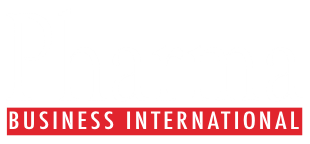The European Commission (EC) has approved a Type II variation for Janssen-Cilag International NV’s (a Johnson & Johnson company) CARVYKTI (ciltacabtagene autoleucel; cilta-cel).
This latest approval is for the treatment of adult patients with relapsed and refractory multiple myeloma (RRMM), who have received at least one prior therapy, including an immunomodulatory agent (IMiD) and a proteasome inhibitor (PI), have demonstrated disease progression on the last therapy, and are refractory to lenalidomide.
Cilta-cel is an innovative chimeric antigen receptor T-cell (CAR-T) therapy directed against B-cell maturation antigen (BCMA), a protein that is highly expressed on myeloma cells. With this approval, cilta-cel becomes the first BCMA CAR-T therapy approved in Europe for the treatment of eligible patients as early as first relapse.
More than 35,000 new cases of multiple myeloma, an incurable blood cancer, were diagnosed in the European Union in 2022. Most patients with multiple myeloma relapse after standard treatment. Each additional line of therapy is associated with lower response rates, shorter treatment-free intervals, and increased rates of toxicities and comorbidities. The rate and aggressiveness of relapse with multiple myeloma means new therapies, that attack the disease in different ways, earlier in the treatment pathway, are needed.
“Cilta-cel is a highly innovative, personalised cell therapy, that continues to deliver positive outcomes in patients in need of new therapeutic options,” said Edmond Chan, MBChB, M.D. (Res), EMEA Therapeutic Area Lead Haematology, Johnson & Johnson Innovative Medicine. “Today’s approval marks important progress for eligible patients with multiple myeloma, who may now benefit from treatment with cilta-cel earlier in their treatment pathway, where it has the potential to transform outcomes and change the trajectory of their disease.”
The expanded indication for cilta-cel is based on positive results from the Phase 3 CARTITUDE-4 study (NCT04181827), evaluating the efficacy and safety of cilta-cel in patients with relapsed and lenalidomide-refractory multiple myeloma. Data from the study were previously published in The New England Journal of Medicine. The CARTITUDE-4 study included patients (n=419) with relapsed and lenalidomide-refractory multiple myeloma, who had received at least one prior line of therapy (range, 1-3), including a PI and an IMiD. Patients were randomised to receive either a sequence of apheresis, bridging therapy, lymphodepletion and cilta-cel (n=208) or standard of care (SOC), which included daratumumab, pomalidomide and dexamethasone (DPd) or pomalidomide, bortezomib and dexamethasone (PVd) (n=211).
At a median follow-up of 15.9 months, a single infusion of cilta-cel resulted in a significantly lower risk of disease progression or death versus SOC (hazard ratio [HR]: 0.26; 95 percent confidence interval [CI], 0.2-0.4). The median duration of progression-free survival (PFS) was not reached in the cilta-cel arm and was 11.8 months in the SOC arm (95 percent CI, 10-14). At 12 months, estimated PFS rate was 76 percent in the cilta-cel arm (95 percent CI, 69-81) and 49 percent in the SOC arm (95 percent CI, 42-55). Patients in the cilta-cel arm achieved an 85 percent overall response rate (ORR) and 73 percent achieved a complete response (CR) or better. Among patients in the SOC arm, the ORR was 67 percent and CR or better was 22 percent. Overall minimal residual disease (MRD) negativity rate was higher in the cilta-cel arm (61 percent) than the SOC arm (16 percent). After a median follow-up of 28.7 months, median overall survival was not estimable in the cilta-cel (95 percent CI, NE-NE) and SOC (95 percent CI, 34-NE) arms but trended in favour of cilta-cel (HR: 0.57; 95 percent CI, 0.4-0.8).
Adverse events (AEs) were evaluated in the safety population (n=208 in each arm). Results published in The New England Journal of Medicine demonstrated that the most common Grade 3 or 4 AEs in both groups were haematologic, including neutropenia (cilta-cel: 90 percent; SOC: 82 percent), thrombocytopenia (cilta-cel: 41 percent; SOC: 19 percent) and anaemia (cilta-cel: 36 percent; SOC: 14 percent). Serious AEs were reported in 92 patients (44 percent) in the cilta-cel arm and in 81 patients (39 percent) in the SOC arm. Infections occurred in 62 percent and 71 percent of patients in the cilta-cel and SOC arms, respectively. Overall, 39 patients in the cilta-cel arm and 46 patients in the SOC arm died; ten cilta-cel and five SOC patients died due to treatment-emergent AEs. Cytokine release syndrome (CRS) occurred in 76 percent (one percent Grade 3 or 4) of the 176 patients who received cilta-cel.
The EC has also approved the conversion of the conditional marketing authorisation (MA) for cilta-cel to a standard MA, as the obligations of the conditional approval have now been met.
“Our ambition is to progress the science to address patients’ needs at each stage of this complex disease,” said Jordan Schecter, M.D., Vice President, Disease Area Leader, Multiple Myeloma, Johnson & Johnson Innovative Medicine. “Cilta-cel is an important part of how we are working to redefine multiple myeloma and ultimately achieve sustained remissions for patients. We are determined to get in front of cancer and today’s approval represents an important step forward in achieving this goal.”
The EC approval follows the U.S. Food and Drug Administration (FDA) approval of cilta-cel for the treatment of adult patients with relapsed or refractory multiple myeloma who have received at least one prior line of therapy including a PI and an IMiD and are refractory to lenalidomide, on 5 April 2024.


